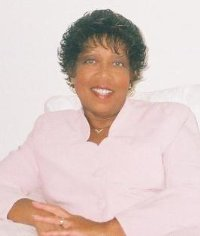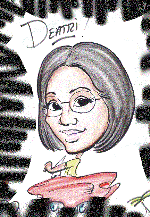 Successful writing is not easy. As authors, we already know this much. And, of course, there are a number of factors in being a successful writer. Included among these is a willingness to edit and cut your work as needed. This last means you have to be willing to be an editor in your own right these days, but also to listen to professional editors of various publications to which you might send your work.
Successful writing is not easy. As authors, we already know this much. And, of course, there are a number of factors in being a successful writer. Included among these is a willingness to edit and cut your work as needed. This last means you have to be willing to be an editor in your own right these days, but also to listen to professional editors of various publications to which you might send your work.
This last is hard to do. I don’t mean the sending part. I mean putting up with others editing our work once it’s been accepted. Whereas we might not mind editing our own work, we tend to hate it when others try to do it for us. This tends to be a truism of all writers. We just don’t like people touching our work, not after we’ve put so much personal effort into making it “just right” already.
However, in order to be a successful writer, you must put up with editors. That is, you must if you actually want to get your story published. Yes, the burden of editing falls ever more heavily upon us as writers these days, but even so, publishers have the last say, and most still have editors read your work. This is especially true of “pro” publishers.
And here we come to the crux of our discussion. In order to be a successful writer in the traditional sense of the term, we must first be published somehow, someway, somewhere, and not just in a vanity press. So that usually means going through some sort of editing process to “get there.”
Even if we strictly self publish, we still need the benefit of an “outside” editor. But if we do send our manuscripts to some publisher, is there anything we can do to sway them, to make them want to publish our work, in particular, over the thousands of other manuscripts they receive on a monthly basis?
Yes, there is. There are a number of things we can do to improve our chances. Some of these things may seem incredibly obvious to many writers, but you would be surprised, perhaps even amazed, at how many authors do not use all of them, or simply don’t use any of them at all! Why this is so, I can’t say. But it’s true.
Perhaps, it has something to do with the number of publishers out there. There are so many and all of them seem to want a different type of format for submissions. Although many say they want standard manuscript format, in reality, this doesn’t really seem to be the case at all. Each one usually adds certain requirements to this basic demand. One of the things you can do is to give them exactly what they want.
The same holds true for cover letters and synopses. While all of them seem to want short cover letters, it is amazing how many seem to want you somehow to fit almost the entire contents of the book, your biography, synopsis, and any marketing plans into that one-page, cover letter. I know this to be true, because I have come up against this many times. What can one do? You have to give the publisher what they want.
Or do you? Often, we send in a manuscript that is close in style to their demands, but not quite on target as far as formatting requests go. We simply use the same version we’ve already sent to someone else.
Is this okay? No, generally, it isn’t. As a submissions editor myself, I can assure you we are very interested in getting through our slush piles as quickly as we can, because there are always new piles growing. This means we don’t like wasting our time. Therefore, rightly or wrongly, we try everything we can to weed out manuscripts and shorten that pile to a more readable level.
How do we do this? The answer is simple. We do it by getting rid of those manuscripts that do not conform to our formatting specifications. That’s the first thing we look for. Yes, it’s an easy way to shorten the pile quickly, but we also do it because the wrong formatting tells us the author will probably not be a good one for us. If writers won’t do the basic things we ask up front in order to get their work published by our company, we don’t want them! Again, it’s that simple.
In other words, if authors don’t format exactly as we want, often it’s a sign to us they aren’t bothering to listen, or worse, are ignoring our requirements. This means, usually, it will be a battle to get them to do what we ask. Likely, they may be troublesome to us down the road. You see, the guidelines are not just to make it easier for us. They are often a test. If you fail that test, we simply move on. There are plenty of other good writers out there besides you!
So to be a successful author you must not only be a good writer with all that this entails, but you also must be willing to compromise as to how you send out your submissions. You must be willing to change them for each publisher demanding this. And yes, it can be tedious to do. But to do it right is necessary. I, personally, have had to write any number of versions of a particular synopsis, for example, because some publishers want very short ones, others, one-page ones, and still others, comprehensive ones. Again, it is tedious!
As a side note, something else to consider—you must send the right work to the right publisher. Always read the publishers’ submission guidelines carefully. For instance, under the horror genre, publishers can still be very fussy. Some don’t want anything to do with vampires. Others don’t want anything to do with fantasy. Still others don’t want anything to do with science fiction. So you had better read those guidelines closely. Don’t try to force your manuscript into a publisher’s hands who does not want your sort of story. You will get rejection letters. Do you remember in school when your teacher would mark you down for poor penmanship? Publishers do much the same thing, only they do it with regard to the submission formatting of the manuscript.
Now, let’s say the publisher/editor has read your story. What’s the next step? Well, they will contact you and say they are interested in your work, that they’d like to publish it, and are you willing to sign a contract? Of course, you’re going to jump at that, and answer, “Yes!”
I imagine that many of us do this without really reading the fine print of the contract before doing so. And that’s a mistake. Always read the contract through several times! That’s a given. You must consider various aspects of the contract as you read it, of course, but here we’re concerned principally with the terms and conditions regarding editing.
The next step is the publisher will want to edit your work to his or her own specifications for their publication requirements. These specifications may include the size of the work (it may need to be shortened), and/or content altered, etc. Under content, it may be the type of language you’re using (adult language?), the grade level you are writing to (this may need to be lowered, but is usually never raised), and edited for various other factors the publisher may feel is their God-given right, to demand of you.
And this is where the problems usually start. Do you remember how we mentioned earlier that writers do not like their work edited—at all? They will resist every way they can. How much dare you resist, as an author? How far can you go? Well, the answers to these questions may lie in your contract. Again, the contract usually states the publisher’s rights with regard to editing your work.
Often, if the author refuses to agree to make the changes the publishers require (even if the author has the final say according to the contract), then the publisher usually has the right to refuse the work and not print it. If you have received a cash advance on your novel, they will most certainly demand it back under the terms and conditions of the contract you signed. So beware! Even if you have final say on editing written into the contract, for practical purposes, you may not really have that final say. You will have to compromise, maybe big time, and give in on certain points.
Something else to remember: the publisher/editor selected your work because they thought it might sell and make money for them. This is their single strongest criterion. They also have a very strong idea of what works to make money, based on past publishing experience. They usually go with that. So, like it or not, whether you have your own experience in this way, or not, you should listen to them on this one point. Remember the old adage, “he who pays the piper, gets to call the tune.”
Yes, to a certain extent, you can argue with them. But a warning here, if you argue too much, they may decide not to publish your work. They simply may not want to bother with yet another unwieldy, recalcitrant author. What’s more, they may not even warn you about this. The publisher may just send you a notice saying they do not want to work with you any further and so they are cancelling the contract. You will then just be out of luck.
So to be a successful writer is not only to be a good writer, a persistent one, one who produces work on a regular basis, but also one that is willing to compromise on many issues. Of course, if you are J. K. Rowling, you can say and do pretty much what you want. They’ll let you. If you’re not Ms. Rowling, then you had best listen to this advice: compromise with your editor(s). Listen to his/her advice and requests. Try to do what they ask of you with regard to editing your work to the best of your ability, and hopefully without damaging the quality of your work. It might even improve it, you know…
In conclusion, I can only say as a submissions editor, as well as a writer, one of the key ingredients in being a successful author is to listen to your editors and publishers. Perhaps, unbelievably, when it comes to marketing and selling your book, they actually may know what is best.
Your only other option is to seek a different publisher or self publish your work, if you haven’t already signed a contract. If you try to renege, the publisher may just sue you. Or at the very least, they will never consider your submissions again. And publishers have power. Editors have power. Like it or not, they talk to each other. Sometimes, they may be talking about you and not in a good way! So tact, diplomacy, and a willingness to listen and above all, compromise, are a must for all authors who want to be successful.
And finally, these are just my personal words of advice. You can take them or leave them. But if you leave them, you may find your publisher may just choose to leave your work as unread or unpublished. The choice is yours. To be independent, to stand your ground, is fine—to a point. Push this right too far, and you may become the world’s greatest unpublished author. Get it?
Rob Shelsky
http://robshelsky.blogspot.com/
If you found this post helpful, please use the share buttons to spread the word about it.
Don’t have a copy of Become A Successful Author? What are you waiting for? Become A Successful Author will be used in the “How To Write That Novel” course at Chicago State because it covers everything from branding to writing to editing to formatting and uploading electronic and print books to marketing and so much more. Your time is money. Look at all the time, thus money, you’ll save by ending your search for answers: Purchase Become A Successful Author (eBook) for only $4.99 from: Amazon (US), Amazon (UK), Barnes & Noble
 The publishing industry is a dangerous place. I read an article the other day that stated the overwhelming majority of self-published authors don’t even sell 500 copies of their titles. Scary huh? What can authors do not to be in that number? I have my opinions on the subject, but called in additional experts (self-published authors) to give their two cents on what self-published authors’ worst enemy is. I received lots of great responses that pretty much fell into the below deadly sins.
The publishing industry is a dangerous place. I read an article the other day that stated the overwhelming majority of self-published authors don’t even sell 500 copies of their titles. Scary huh? What can authors do not to be in that number? I have my opinions on the subject, but called in additional experts (self-published authors) to give their two cents on what self-published authors’ worst enemy is. I received lots of great responses that pretty much fell into the below deadly sins.






